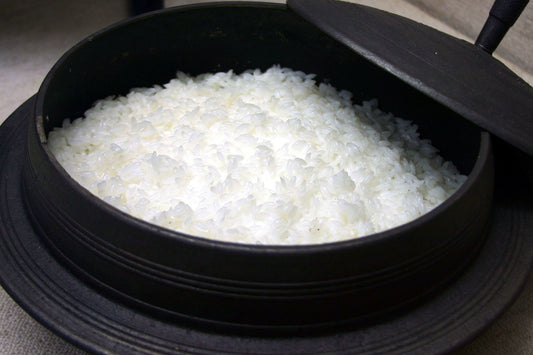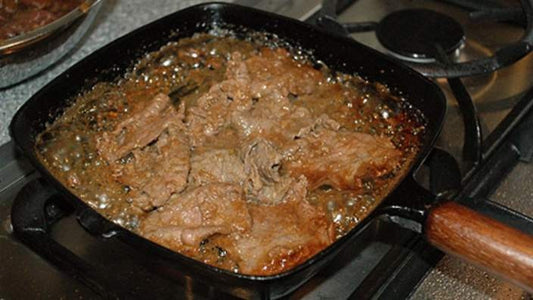Korean barbecue is made for groups of friends coming together to eat. All the marinating takes place before the guests arrive, side dishes and accompaniments are made, and then everyone gets incredibly hungry from the delicious aromas as the meat cooks. Chung Jae Lee is a former judo champion and a great ambassador for Korean food. He now works as a chef in the Northern Territory, where he has set up two restaurants serving his take on traditional recipes.” Maeve O’Meara
Soaking time 2 hours
Marinating time 30 minutes
Ingredients:
- 2.4Kg beef short ribs, on the bone – ask the butcher for 4.5 cm
- 50ml Vegetable Oil
- 40g Pine Nuts, to garnish
- 1 Tbsp Sesame Seeds, to garnish
- 6 Spring Onions, finely sliced
Marinade
- 400g nashi pear, peeled and roughly chopped
- 1 Onion, peeled and quartered
- 5 Garlic Cloves
- 130ml Soy Sauce
- 50ml Korean or Japanese brand of plum concentrate
- 60ml Rice Wine
- 2 Tbsp Sesame Oil
- 55g Sugar
- 2 Tbsp Honey
- 2 Tsp Cheong Chan thick caramel sauce
- Freshly ground Pepper
- 1 Tbsp Sesame seeds, dry roasted
Method:
Soak the ribs in water for 2 hours, and if possible change the water every hour to remove the blood. Cut each rib into pieces 6–7 cm (2½–2¾ in) long (about four per short rib). To butterfly the ribs, firstly remove excess fat and tendons. Now, slice into pieces 5 mm (¼ in) thick, taking care not to separate the meat from the bone edges. Turn and repeat a total of three times until you have a uniform thickness. Put narrow slits on both sides of the meat with the back of your knife.
To make the marinade, blend all the ingredients except the sesame seeds together until smooth. Chop the sesame seeds and add. Cover the ribs in the marinade and roll up, ensuring the meat is well coated. Cover and set aside for 30 minutes.
Preheat the charcoal grill until you have coals. Paint the grill with the vegetable oil. Unroll the beef ribs and grill over high heat about 15 cm (6 in) above the coals for 2 minutes on both sides, taking care not to burn them. Coat the beef with the remaining marinade and grill for a further 1 minute on each side and you are ready to eat.
Serve sprinkled with pine nuts, roasted sesame seeds and spring onions.
Possible accompaniments include steamed rice, lettuce leaves, Korean chilli paste (Gochu Jan), garlic peeled and cooked on the barbecue, fresh chilli to eat on its own or even dipped into the chilli paste, kimchi (fermented vegetables) and pamuchim (scallion salad).
Note
- For the specialist ingredients, check out your local Korean or Asian grocery store.
- Recipe from Food Safari Fire by Maeve O'Meara (Hardie Grant, hbk, $55). Photography by Kaily Koutsogiannis.




